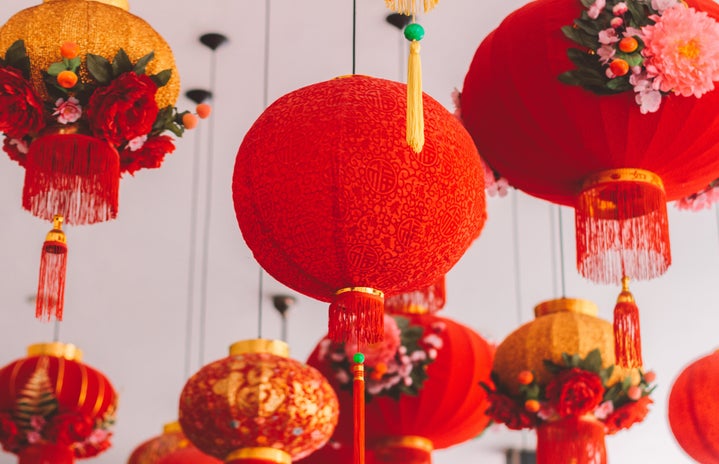Directed by Domee Shi, Turning Red is Disney-Pixar’s latest animated feature that explores family, friendship, and growing up. Many viewers have noted the similarities in addressing generational trauma of the more recent projects that Disney has released, like Encanto, and I agree. I definitely appreciate the increase in diversity of these films, and the storylines and animation are always something I can count on for Disney-Pixar creations. Being an Asian woman myself, when I first heard about Turning Red, I was ecstatic. So when the reviews came rolling in with a great amount of discourse, I wasn’t surprised. It’s typical for something with representation of a minority group to get that kind of response, but being a Disney-Pixar animated film, there’s always an increased element of scrutiny. Let’s take a deep dive into the discussion on Turning Red!
What is Turning Red about?
Meilin “Mei” Lee (voiced by Rosalie Chiang) is a quirky and confident 13-year-old Chinese-Canadian girl. Her parents see her as their hard-working honors student who, in her free time, helps out at the Lee family’s temple in Toronto’s Chinatown, while Mei’s three friends Miriam, Priya, and Abby are the only ones who know about her crushes, her love of karaoke, and her obsession with boy bands. The four of them especially adore 4*Town, a culmination of every single boy group you could think of from the 2000s. Mei’s mother, Ming (voiced by Sandra Oh), keeps a watchful eye on her daughter and has high expectations of her, and her father, Jin, is supportive of his daughter and is known for his excellent cooking.
One day, Mei finds out that she turns into a huge, fluffy red panda when triggered by extreme levels of emotion. At first, in a fit of hilarious miscommunication, Ming believes Mei has gotten her period and tries to have “the talk” with her about womanhood. When Ming finds out her turning into a giant red panda, she explains their family history. The Lee family’s temple honors their ancestor Sun Yee, who was known to have a close connection to red pandas. Due to ancient powers from her matrilineal bloodline, extreme levels of emotion such as anger, embarrassment, anxiousness, and love can bring forth the red panda spirit. Ming also tells Mei that, like her, she can trap her red panda spirit through a special ritual during a red full moon, but the ritual can only work if the red panda transformation hasn’t been enacted too often.
As it turns out, Mei’s classmates find out about her powers and seem to absolutely adore the cute and fluffy persona. Seeing this as an opportunity, Mei and her friends decide to raise money for 4*Town by selling photo ops, red panda merchandise, and more. The story follows as Mei comes to terms with this newfound ability alongside the usual problems of growing up, like dealing with crushes, overbearing parents, and just wanting to go see a boy band live in concert. She struggles between wanting to be independent and wanting to please her mother, and with her friends by her side during this troublesome time, Mei’s confidence soars even higher.
Overall, what are people saying about Turning Red?
The reception to Turning Red has been overwhelmingly positive, with a lot of people citing the similarities in the storyline dealing with intergenerational trauma like Encanto. Instead of perpetuating a trope of “rebellious daughter” vs. “evil strict mother,” both Ming and Mei, and even her grandmother/Ming’s mother, are all complex characters. Like Mei, Ming has struggled to be the perfect daughter that her mother expected, and the pressure can be felt even with Mei’s aunties and cousins. Besides the representation of Asian girls and women, people especially praise Turning Red’s ability to discuss growing pains, puberty, and emerging womanhood. From confusion over suddenly liking boys, to embarrassment with period products, Mei’s journey mimics stumbling into puberty and periods that many people can relate to. But this aspect of “relatability” has seemingly been the point of conflict in online discourse, from film critics and parents alike.
So, what’s with all the controversy?
There are multiple reasons being cited for people finding that Turning Red is a terrible film or is inappropriate for young audiences. Most notoriously, CinemaBlend’s managing director Sean O’Connell wrote that he couldn’t connect with the film, calling it “limiting” because of how it focused on the Asian community of Toronto, that “the film legitimately feels like it was made for Domee Shi’s friends and immediate family members” (NPR). While the review has since been taken down and both O’Connell and the editor-in-chief of CinemaBlend have apologized, the internet has certainly not let that statement go away. O’Connell’s review is just one example of many that provide a very white-centric way of viewing films involving minorities. Turning Red is monumental in the fact that Domee Shi is Pixar’s first solo female director and it’s the first Asian-led film by the studio, but many viewers who aren’t Asian women or girls have found the film relatable and/or remarkable.
Another point of contention is the fact that the film addresses puberty, maturity, and menstruation. It’s obvious that Mei turning into a red panda at the age of thirteen is an analogy for getting her period, and she has a strange change of heart when those boys in her school that she once found icky are suddenly attractive to her. Furthermore, Mei and her friends are obsessed with a boy band, to the point where they raise money for pricey concert tickets. Sara Moniuszuko from USA Today writes that “while parents may be caught off guard by curious kids asking questions about puberty or periods after seeing the film, experts say the real issue is not talking about periods at all as well as the social stigma.” Talking about puberty and sexuality is still a taboo topic in some households, and most parents see Disney as a seemingly appropriate company for their children to view content from. The outcry from parents citing that Turning Red is “ruining” or “traumatizing” their children don’t understand that, one way or another, children will need to learn about the processes of growing up.
I recommend you check out this great Vox article written by Aja Romano for more insight into the controversy surrounding Turning Red.
My final thoughts?
I laughed out loud. I ugly cried. I cheered. Overall, Turning Red was incredible. I’m a sucker for animated movies, but add in an element of relatability and an interesting storyline, and I’m already there. While I might not be Canadian, I definitely related to having grown up as an Asian girl with overbearing parents. I had my fair share of boy bands that I loved, and my friends and I weren’t afraid to embrace our inner weirdness. While I know that not everyone would be able to relate to everything in Turning Red, people need to understand that you don’t need to see 100% of yourself in a film’s characters in order to relate to it or enjoy the film. It’s a quirky, fun coming-of-age Disney-Pixar film that talks about the growing pains of becoming a teenager and figuring out who you are when you’re with your family, your friends, your classmates, and society at large. I absolutely adored Turning Red and highly recommend you watch it if you haven’t already! And to end with a quote from Mei herself:
“We’ve all got an inner beast. We’ve all got a messy, loud, weird part of ourselves hidden away.”


